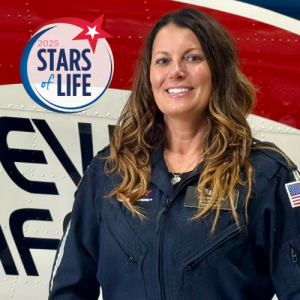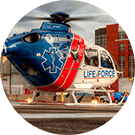For patients, insurance denials can mean bills that are in the tens of thousands of dollars for care they could not do without. Even with the passing of the No Surprises Act (NSA), where the patient is removed from the negotiation process between emergency medical provider and the insurance company, denials of claims happen and have increased since the NSA passed. Many people believe that since the NSA was passed, they can never be responsible for emergency care bills- but that is simply untrue. Copays, coinsurance, deductibles and even outright denials of coverage can still leave patients with medical bills that are difficult to afford.
Insurers are denying claims at an increasing rate. For the 2023 fiscal year, insurance companies, on average, denied 18 percent of claims for ACA marketplace plans– some denied an average of 80 percent of claims.[1] When the need is most critical, leaving no time for second- guessing or pre-approvals, patients are left to deal with the aftermath of a total denial of coverage. According to the Government Accountability Office in 2017, the median cost of air ambulance treatment was $36,000.[2], This average cost can be burdensome for the patient or their family.
The importance of air ambulance availability in communities cannot be understated, especially in EMS deserts, areas of the country where emergency medical assistance is not readily available as it is in more urban areas. Understanding more about the cost of Helicopter EMS, and how insurance coverage may work for those patients in critical need, can help families prepare for an air ambulance transport. By knowing your insurance provider’s denial rates of coverage, your likelihood of need based on distance from hospitals or trauma centers, and any providers who offer financial protections through household or community-wide membership ensures that, if you need an air ambulance, concerns about a denial of coverage or just a large bill from insurance won’t keep you or a loved one from accessing this care when you need it most. AirMedCare Network (AMCN) offers air ambulance membership in 38 states and in many rural communities on a county-wide level. Only when transported by an AMCN provider, our patients pay zero dollars out-of-pocket; even when uninsured or underinsured.
Frequently Asked Questions:
If an AirMedCare Network Provider does not transport you, you will be responsible for payment. Our membership program only covers transports provided by our affiliates.
There is no limit to the number of transports a member may take in a year. Each transport is handled the same way and must be an emergent or time-sensitive transport as determined by a physician (or other appropriate provider) or first responder unaffiliated with AMCN.
With an AirMedCare Network membership, any person or persons who reside under one (residential) roof are covered. In the event we have a member who lives in a duplex or apartment complex, we designate the primary member’s residence/address— that is considered the “one roof”. Undergraduate college students can be covered under their parent’s membership as well as anyone previously residing in the household who is then moved to a permanent care facility.

A flight nurse’s courage: How one hero stepped up when it mattered most
Across the country, emergency medical professionals are trained to respond at a moment’s notice®. But sometimes circumstances make a difficult situation even more challenging —

Common Hiking Injuries: Prevention and First Aid
Hiking is a favorite American pastime. From sandy beachside dunes, higher elevation climbs or peaceful forests, you’ll find hikers on the trail year-round. For experienced

Rural Communities and Limited Access to Healthcare
When Time is a Factor Imagine you’re a rancher in South Dakota or another state where hospitals are often a great distance from small towns




